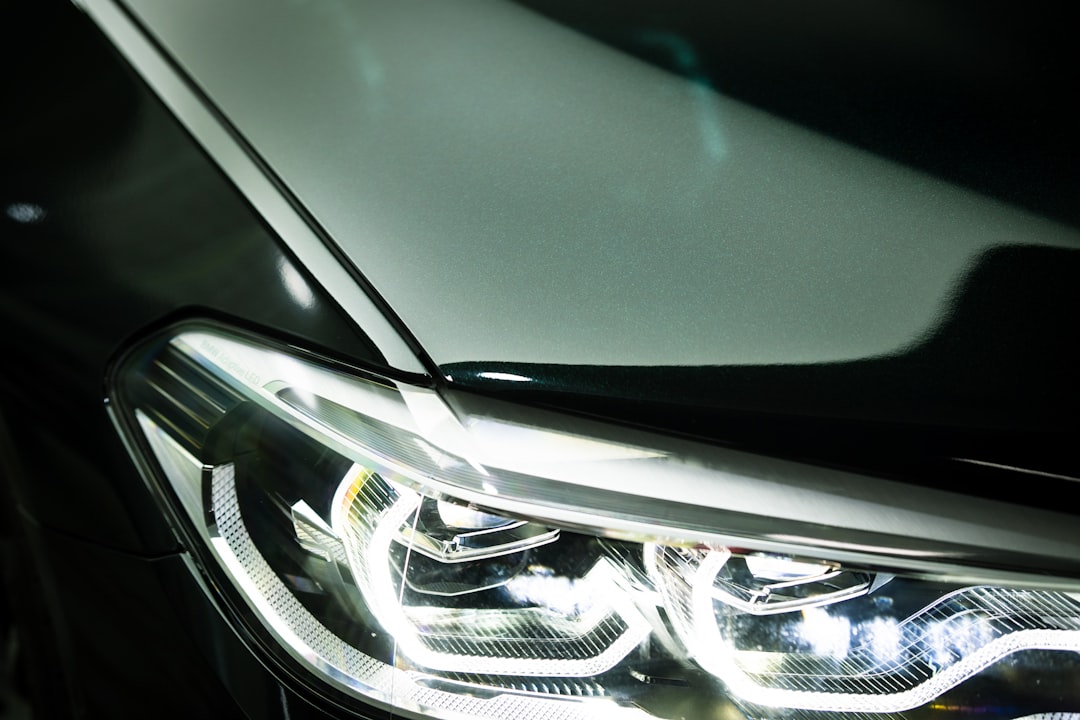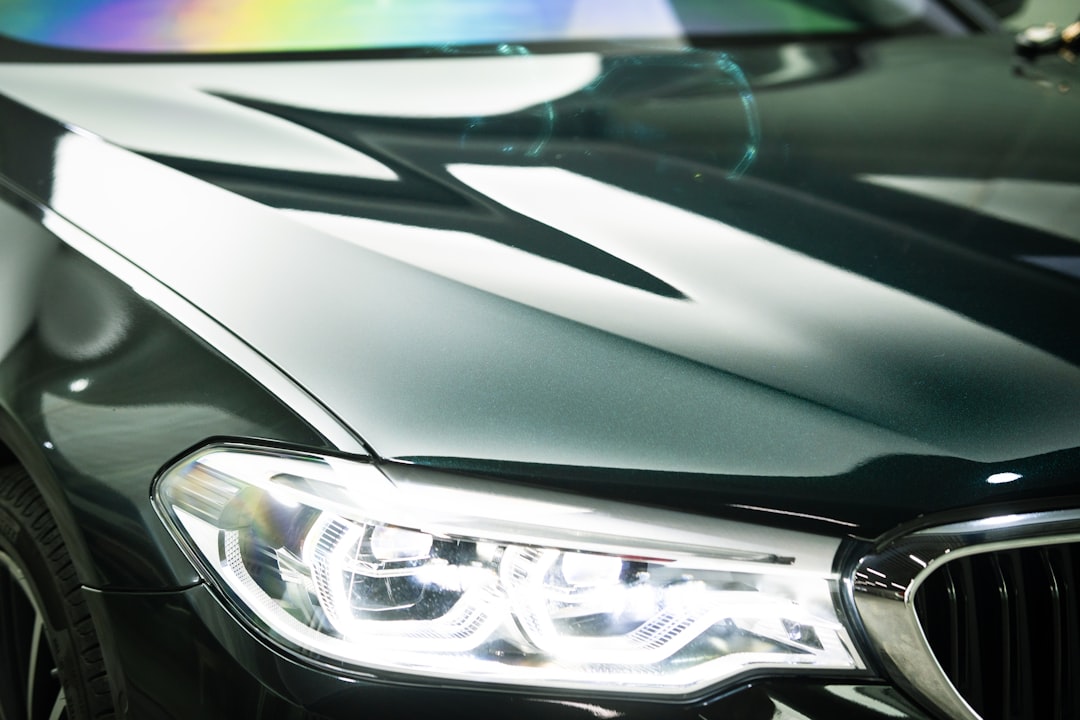

Engage prospects with a scan and streamline customer engagement with FREE QR code marketing tools by Sona – no strings attached!
Create a Free QR CodeFree consultation

No commitment

Engage prospects with a scan and streamline customer engagement with FREE QR code marketing tools by Sona – no strings attached!
Create a Free QR CodeFree consultation

No commitment
In today's digitally driven world, QR codes have become powerful tools for bridging offline engagement with online action. For automotive lighting products businesses, QR codes solve the challenge of capturing real engagement from physical interactions that often go untracked or underutilized. Paper forms, static brochures, and packaging often cause a disconnect, and valuable prospects exploring options for LED headlights or smart tail lights may never be recognized or followed up on. The result is missed opportunities and limited insight into buyer intent.
Whether it is connecting customers directly to product information for LED automotive lights, facilitating headlight warranty registrations, or routing in-store shoppers to exclusive online promotions, QR codes make it possible to transform passive interest into measurable digital actions. This seamless journey, from a scan in a store aisle to an online demo or warranty form, not only drives higher engagement and lead capture but also surfaces live intent data that marketers can actually use.
This article explores how automotive lighting products marketers can use QR codes to close the gap between physical and digital experiences. You will see how to address lost opportunities, deliver actionable insights, and unlock measurable revenue impact at every offline touchpoint, from packaging and in-store displays to events and post-purchase support.

Modern buyers research on their phones while standing in front of shelves and demo vehicles. If your materials do not offer instant paths to action, those moments slip away. QR codes convert these high-intent moments into trackable digital interactions. The key is to design QR experiences that match the buyer’s immediate need: product clarity, confidence, and convenience.
Start by replacing analog processes that slow people down. Think of the paper warranty card that never gets mailed, the brochure with a generic URL that no one types, or the in-store poster that requires a shopper to search your site manually. QR codes streamline these moments and make it effortless to scan, learn, and convert in seconds.
This approach is designed for growth marketers, operations leaders, and business owners who want to modernize their buyer journeys, reduce waste, and turn every physical touchpoint into a digital gateway. Tools like Sona QR support every step, from design and deployment to tracking and attribution, so you can evolve from guesswork to data-driven decisions.

Automotive lighting brands face a persistent problem: offline attention rarely becomes online action with full attribution. Shoppers compare LED headlights in-store, flip through catalogs, or watch live demos at events, yet the brand never learns who they are or how to reach them again. This anonymity weakens follow-up, slows growth, and hides the true ROI of physical marketing.
QR codes correct this by giving every print asset and product surface a measurable, interactive layer. Instead of hoping a buyer searches for your site later, you empower them to take the next step immediately. This speed and simplicity improves user experience and converts more high-intent moments into pipeline and revenue.
When implemented with intention, QR codes become the connective tissue that links showroom curiosity, trade show engagement, in-home unboxing, and post-purchase support into one measurable, conversion-oriented journey.
Automotive lighting companies benefit most from QR formats that accelerate education, reduce support friction, and capture first-party data. Selecting the right destination on scan is as important as the physical placement.
Dynamic, editable QR codes are ideal for campaigns that evolve with seasonality, regulation changes, or new product introductions. Static codes suit evergreen content like installation videos or general support resources, while dynamic codes deliver flexibility, audience tagging, and robust analytics.

Many high-value interactions in this vertical still happen away from keyboards: in retail aisles, dealership showrooms, service bays, and trade show floors. Without a bridge to digital, these moments vanish without attribution. QR codes turn these familiar environments into reliable sources of leads, user insights, and incremental revenue.
Start by looking at your most trafficked surfaces and the steps in your customer journey where buyers stall. Qualify placements by intent: places where shoppers compare, ask questions, or seek reassurance. Then add QR codes that resolve friction on the spot and feed data back into your CRM.
Each of these placements can serve a distinct goal: building awareness, driving consideration, or capturing conversions. With unique codes per asset, you can pinpoint what works and scale it.

Automotive lighting brands are uniquely positioned to benefit from QR-enabled workflows that remove friction at critical moments. The following use cases are proven to lift engagement, reduce support burden, and reveal high-intent buyers.
These use cases demonstrate how QR codes align with buyer motivations at every stage. They transform passive interest into qualified leads, streamline onboarding for smart products, and provide the data foundation for better lifecycle marketing.
Every scan is a moment of declared intent. By tagging QR codes by product line, placement, and journey stage, you can assemble high-fit audiences tailored to future outreach. This segmentation is especially powerful in automotive lighting, where needs vary widely by vehicle type, use case, and buyer profile.
Design your campaigns so that each scan resolves a question and labels the intent behind it. Use dynamic QR codes with parameters that identify context: event, store, or direct mail. Then sync these audiences into your CRM and ad platforms to trigger personalized follow-ups and retargeting.
With an approach like this, Sona QR acts as the intake engine for segmentation and Sona.com becomes the hub where identities and journeys connect. The result is retargeting based on real behavior, not guesswork.
QR codes work best when they are woven into every place your brand shows up. From catalogs to YouTube builds, each scan should feel like a natural next step that continues a cohesive conversation. This integration makes offline marketing measurable and turns your multi-channel mix into a connected pipeline.
Start by mapping your media plan and identifying the next action you want for each channel. Every printed or physical asset should include a QR code with a clear, benefit-led CTA. Use unique, trackable codes per asset so you can learn which channels pull their weight.
QR codes are the offline onramp to your digital marketing engine. With a centralized platform like Sona QR, you can manage codes, monitor performance, and sync scan data with your CRM and ad platforms for full-funnel visibility.
Running a successful QR initiative requires clear goals, the right code type, thoughtful design, smart placements, and continuous optimization. Use the following process to go from idea to impact and to ensure your campaigns align with how people discover, evaluate, and purchase automotive lighting products.
Identify the outcome you want and match it to the buyer context. For example, you might encourage product registration for new LED headlight buyers or promote a fitment check from a shelf talker.
Choose between static and dynamic based on flexibility and data needs. For most marketing use cases, dynamic is the better choice.
Design impacts scan rates. Good contrast, sufficient size, and a prominent CTA matter. Test codes in real environments to avoid surprises.
Put codes where motivation is high and friction is low. Start with placements closest to the buyer’s question or hesitation.
Measure everything from scan rates to downstream conversions. Use insights to refine content, placement, and messaging.
A disciplined approach to planning, design, deployment, and measurement turns QR from a novelty into a growth engine. A platform like Sona QR simplifies each step and centralizes data for faster decisions.

Attribution gaps are costly. If your team cannot connect scan activity to real pipeline and revenue, you will underinvest in what works and overinvest in what does not. With scan-level analytics and CRM integration, you can understand which codes drive leads, which content accelerates consideration, and which channels close deals.
Tracking starts with the scan: time, device, and location. It continues through the session: page views, form fills, and app downloads. When this data flows into your CRM and marketing tools, you build a complete picture from first touch to purchase.
Sona QR captures real-world engagement and Sona.com turns that engagement into insights you can act on. This combination helps you connect scans to revenue, justify spend, and make QR a pillar of performance marketing.
As you scale QR code initiatives, the details matter. Clarity, consistency, and speed all influence scan rates and conversion. Focus on the tactics that improve user experience at the shelf, in the shop, and during installation.
Start with the basics: unique codes per asset, UTM-tagged destinations, and actionable CTAs. Then add process refinements, such as automated follow-ups and staff training, to lift results further.
These practices ensure your QR codes do more than link to pages. They create guided journeys that convert interest into pipeline and revenue while building a reliable data asset for ongoing optimization.
In a market where missed prospect tracking, anonymous engagement, and attribution gaps have traditionally limited growth, QR codes redefine what is possible for automotive lighting products businesses. By unlocking measurability at every offline touchpoint, these simple codes make it feasible to capture real buyer interest, connect previously anonymous interactions to revenue, and continually improve campaign effectiveness.
Brands that embed QR codes into packaging, displays, events, and post-purchase materials will create a connected customer experience from awareness to activation. With Sona QR, you can generate and manage dynamic codes, track performance, and sync scan data to your CRM in minutes. Start creating QR codes for free. The result is a marketing engine that turns every scan into a signal for growth and every physical surface into a digital entry point.
QR codes have transformed the automotive lighting products industry from static marketing to interactive, measurable lead generation channels. Whether it’s capturing qualified leads, enhancing customer engagement, or providing instant access to product information and promotions, QR codes replace outdated methods with seamless, mobile-friendly experiences that drive real-time results. Imagine knowing exactly which lighting product brochures or displays generate the most interest—and acting on that data instantly to maximize sales.
With Sona QR, creating dynamic, trackable QR codes is effortless. Update campaigns on the fly without costly reprints, monitor engagement down to each scan, and link every interaction directly to your revenue stream. No more guesswork—just smarter, high-impact marketing that turns every scan into a valuable business opportunity. Start for free with Sona QR today and illuminate the path to your next lead.
Automotive lighting products such as LED headlights, smart tail lights, fog lamps, off-road light bars, and related accessories benefit from QR codes to enhance engagement and support.
QR codes placed on product packaging or shelf talkers can link to fitment checkers and vehicle selectors that help shoppers validate compatibility quickly and confidently.
While the article focuses on marketing, it suggests LED automotive lighting products offer enhanced performance that buyers research in-store and online with tools like beam-pattern videos and comparisons accessed via QR codes.
The article implies automotive lighting products like LED headlights and smart tail lights improve visibility and safety, with QR codes facilitating access to tutorials, compatibility info, and activation guides to ensure proper use.
The article highlights smart lighting products with app-enabled features, dynamic content updates via QR codes, and interactive demos as current trends in automotive lighting technology.
QR codes bridge offline and online experiences by converting physical interactions into trackable digital engagement, enabling brands to capture leads, provide instant product info, and measure marketing ROI.
Common use cases include warranty registration, fitment checks, live product comparisons, smart lighting app activation, on-demand support, installer locator, and collecting customer reviews and referrals.
QR codes should be placed on product packaging, shelf talkers, demo vehicles, installation manuals, trade show displays, direct mailers, and post-purchase materials to capture buyer intent at key moments.
By replacing static materials with QR codes linked to interactive content, forms, and videos, businesses can streamline education, reduce friction, capture leads, and enable faster follow-up.
Dynamic QR codes are recommended for campaigns needing tracking, segmentation, and content updates, while static codes suit evergreen content like installation videos.
QR codes provide scan-level data including time, device, location, and campaign source, which integrates with CRMs to attribute leads and revenue, enabling data-driven marketing decisions.
The steps include choosing a use case, picking the right QR code type, designing and testing the code, deploying across channels with high buyer intent, and tracking and optimizing performance.
Brands can tag QR codes by product line, placement, and buyer profile to segment audiences, then sync this data with CRM and ad platforms to trigger personalized follow-ups and retargeting campaigns.
Use unique codes per asset, add UTM parameters, trigger follow-ups, educate staff and customers on benefits, and creatively deploy codes on various surfaces to increase scans and conversions.
QR codes connect offline touchpoints like packaging and events to online resources, enabling instant access to product info, registration, support, and tutorials that guide buyers through awareness to activation.
Use Sona QR's trackable codes to improve customer acquisition and engagement today.
Create Your FREE Trackable QR Code in SecondsJoin results-focused teams combining Sona Platform automation with advanced Google Ads strategies to scale lead generation

Connect your existing CRM

Free Account Enrichment

No setup fees
No commitment required

Free consultation

Get a custom Google Ads roadmap for your business






Launch campaigns that generate qualified leads in 30 days or less.
